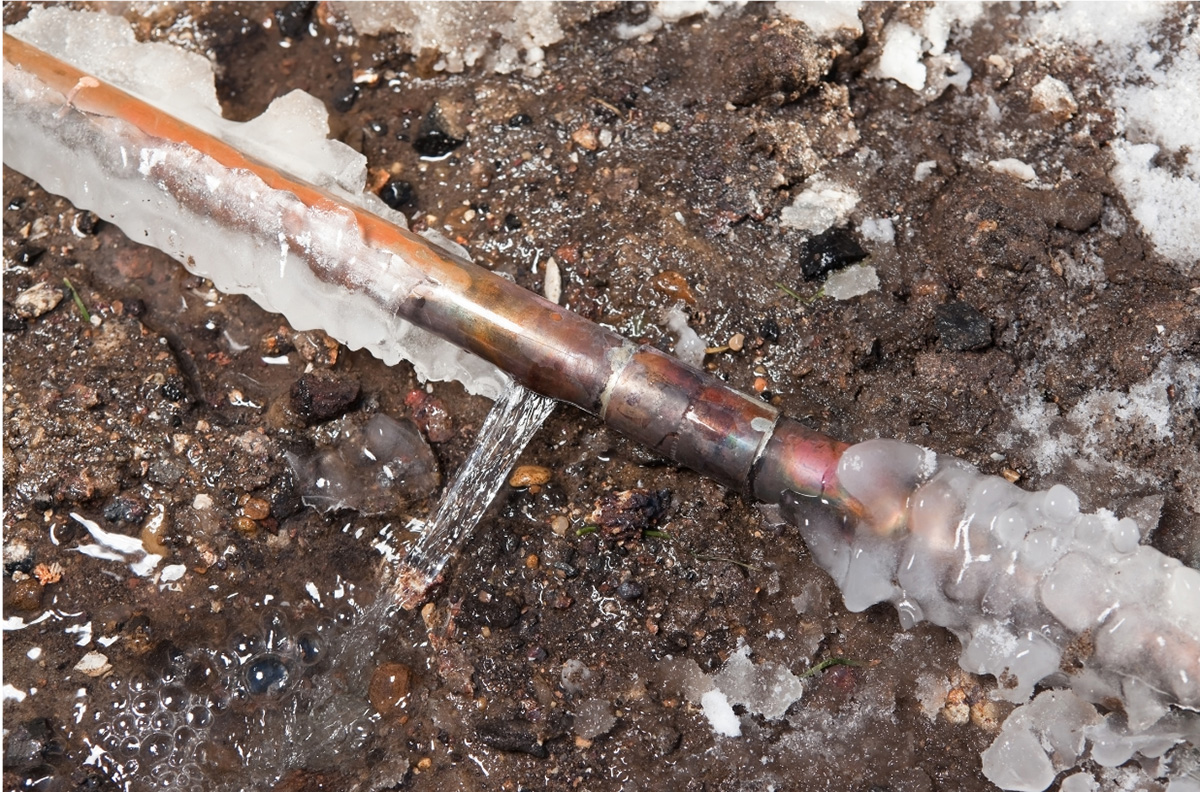Listed here in the next paragraphs you can find additional amazing facts around Helpful Tips to Prevent Frozen Pipes this Winter.

Cold weather can ruin your plumbing, particularly by freezing pipelines. Here's how to stop it from occurring and what to do if it does.
Introduction
As temperatures decrease, the danger of frozen pipes increases, possibly leading to costly repairs and water damages. Recognizing just how to avoid frozen pipelines is critical for home owners in chilly climates.
Prevention Tips
Insulating vulnerable pipelines
Wrap pipelines in insulation sleeves or use warm tape to safeguard them from freezing temperature levels. Focus on pipes in unheated or external areas of the home.
Home heating techniques
Maintain indoor spaces adequately heated up, particularly locations with plumbing. Open cabinet doors to enable warm air to flow around pipelines under sinks.
Just how to recognize icy pipelines
Seek decreased water flow from taps, uncommon smells or sounds from pipelines, and noticeable frost on subjected pipes.
Long-Term Solutions
Structural adjustments
Consider rerouting pipelines away from exterior wall surfaces or unheated locations. Add extra insulation to attic rooms, cellars, and crawl spaces.
Upgrading insulation
Invest in top quality insulation for pipelines, attics, and walls. Appropriate insulation assists keep constant temperatures and reduces the threat of icy pipes.
Shielding Outdoor Pipes
Yard pipes and outdoor faucets
Detach and drain garden tubes prior to winter months. Set up frost-proof faucets or cover outdoor taps with insulated caps.
Understanding Icy Pipes
What causes pipelines to freeze?
Pipelines freeze when revealed to temperature levels listed below 32 ° F (0 ° C) for prolonged durations. As water inside the pipes ices up, it increases, taxing the pipe walls and possibly creating them to break.
Threats and problems
Icy pipelines can bring about supply of water interruptions, residential or commercial property damage, and expensive fixings. Ruptured pipelines can flood homes and cause considerable architectural damage.
Indications of Frozen Water Lines
Determining icy pipelines early can prevent them from bursting.
What to Do If Your Pipelines Freeze
Immediate actions to take
If you believe icy pipes, maintain faucets available to alleviate stress as the ice melts. Make use of a hairdryer or towels soaked in warm water to thaw pipes gradually.
Conclusion
Stopping frozen pipelines requires proactive measures and quick actions. By comprehending the causes, indications, and preventive measures, home owners can safeguard their pipes during cold weather.
5 Ways to Prevent Frozen Pipes
Drain Outdoor Faucets and Disconnect Hoses
First, close the shut-off valve that controls the flow of water in the pipe to your outdoor faucet. Then, head outside to disconnect and drain your hose and open the outdoor faucet to allow the water to completely drain out of the line. Turn off the faucet when done. Finally, head back to the shut-off valve and drain the remaining water inside the pipe into a bucket or container. Additionally, if you have a home irrigation system, you should consider hiring an expert to clear the system of water each year.
Insulate Pipes
One of the best and most cost-effective methods for preventing frozen water pipes is to wrap your pipes with insulation. This is especially important for areas in your home that aren’t exposed to heat, such as an attic. We suggest using foam sleeves, which can typically be found at your local hardware store.
Keep Heat Running at 65
Your pipes are located inside your walls, and the temperature there is much colder than the rest of the house. To prevent your pipes from freezing, The Insurance Information Institute suggests that you keep your home heated to at least 65 degrees, even when traveling. You may want to invest in smart devices that can keep an eye on the temperature in your home while you’re away.
Leave Water Dripping
Moving water — even a small trickle — can prevent ice from forming inside your pipes. When freezing temps are imminent, start a drip of water from all faucets that serve exposed pipes. Leaving a few faucets running will also help relieve pressure inside the pipes and help prevent a rupture if the water inside freezes.
Open Cupboard Doors
Warm your kitchen and bathroom pipes by opening cupboards and vanities. You should also leave your interior doors ajar to help warm air circulate evenly throughout your home.

I ran across that content on How To Avoid Freezing Pipes while browsing on the internet. Sharing is nice. Helping people is fun. Thanks for your time. Don't forget to check up our site back soon.
Give Me A Quote!